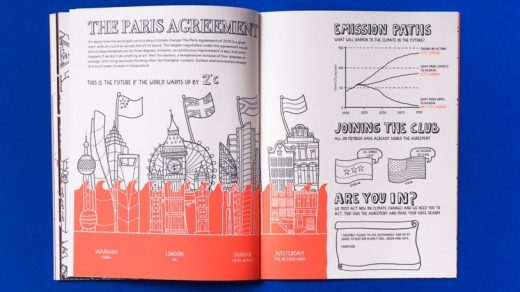This climate change coloring book illustrates how we transition to clean energy
Most people recognize the urgent need for climate action—in a recent poll, around 70% of Americans said that they wanted the U.S. to take “aggressive” action—but fewer clearly understand what needs to happen beyond vague ideas about solar panels and electric cars. A coloring book filled with comic book-style infographics is designed to help make the complex energy transition more accessible.
“When it comes to climate change, our news feeds are flooded with headlines that make it easy to confuse information with misinformation on what the future holds,” says Anika Nicolaas Ponder, team lead for sustainability and innovation at the Institute for Climate Protection, Energy and Mobility. The nonprofit collaborated with the design firm Ellery Studio on The Infographic Energy Transition Coloring Book, which was first released two years ago and is now crowdfunding for an updated edition. “Most of us already know we need to shift to sustainable energy sources and make fundamental changes to the way we live, but the constant barrage of information makes it hard to pin down exactly what those changes are. Most of the well-researched information on what we can expect in the coming years and how to start preparing for it is buried in scientific reports that are dense and difficult to decipher. People need new ways to access science-based information and act on it.”
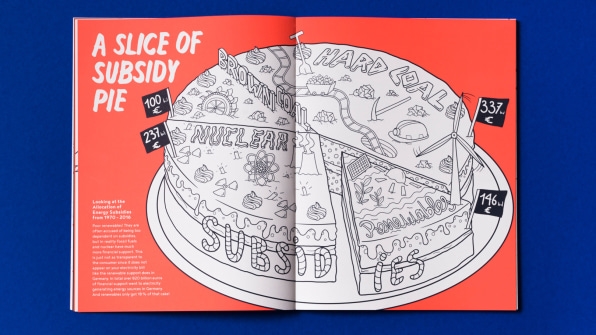
[Photo: courtesy Ellery Studio]
The team spent hours selecting topics to focus on and translating dry data into engaging graphics like the “subsidy pie,” which shows how little government support goes to renewables and how much still goes to fossil fuels and nuclear power. “The research and data on these topics are all out there, often for free,” says Bernd Riedel, head of Ellery Studio’s visual strategy lab. “The challenge was to select the most salient topics and craft a coherent narrative. With too much information, people tend to throw their hands up and disengage. We wanted to make something that was both scientifically accurate and visually rich.”
By making a coloring book—something fun to engage with, tactile, and that demands someone’s focus—the designers wanted to engage people differently than the slew of news about the same topic, and engage people of all ages. “The energy transition will only succeed if people are aware of and enthusiastic about the possibilities of a decentralized, renewable energy supply,” says Riedel. “It’s kind of a geeky topic, so we needed to present the information in an innovative way that would inspire our audience. Clear, unique communication tools like these can be enormously effective—and that’s crucial, because we’ll need everyone on-board to make our future carbon-neutral.”
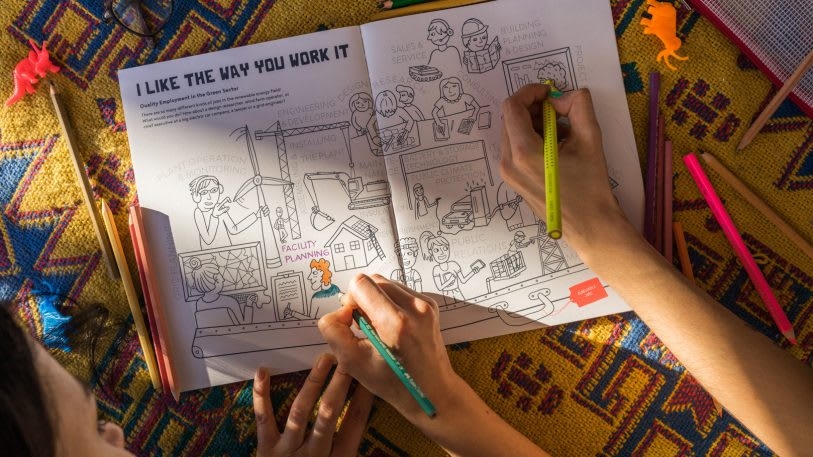
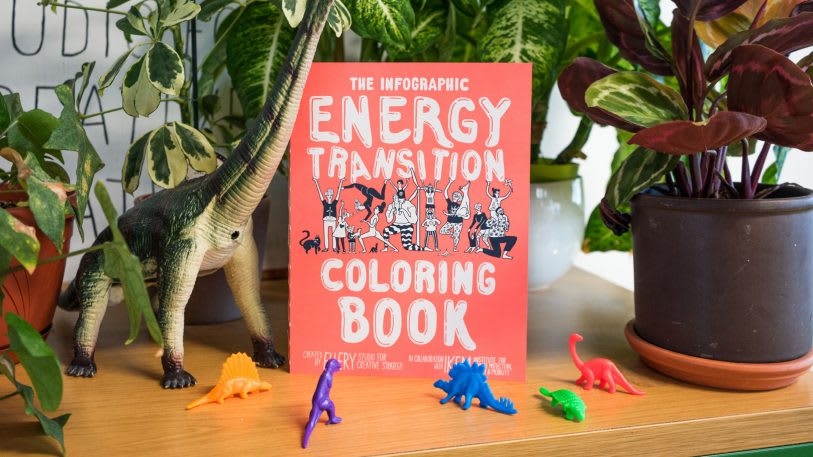
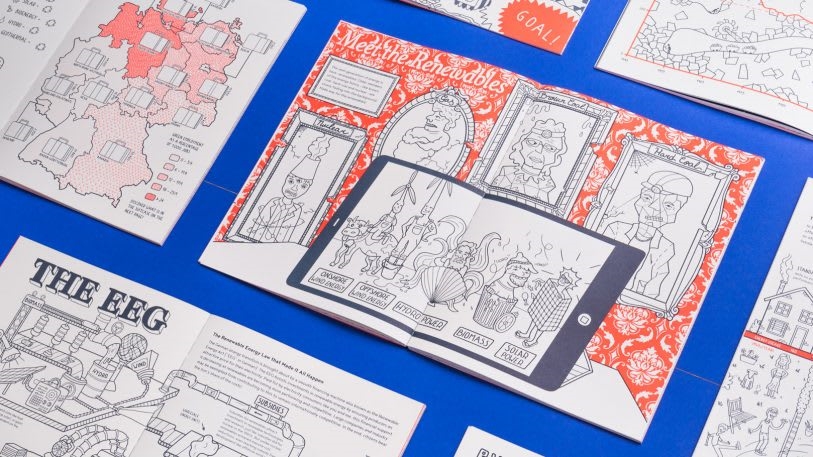
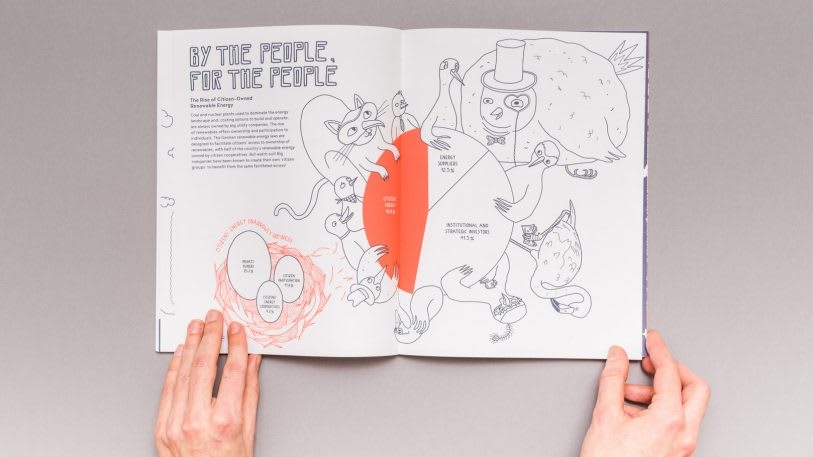
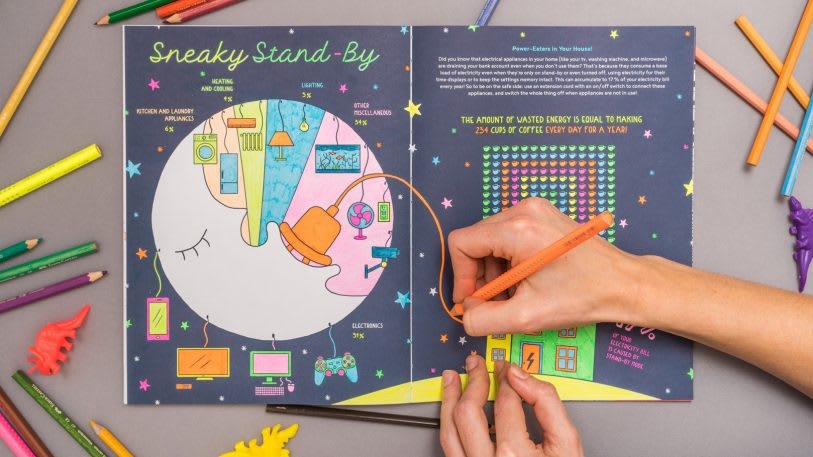
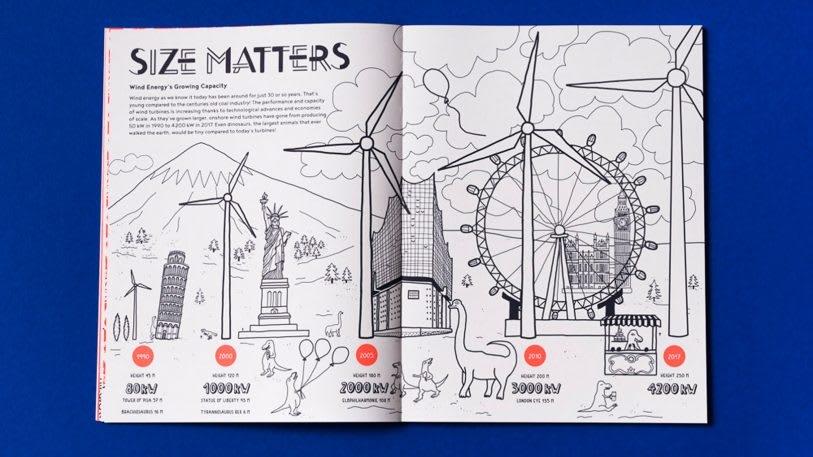
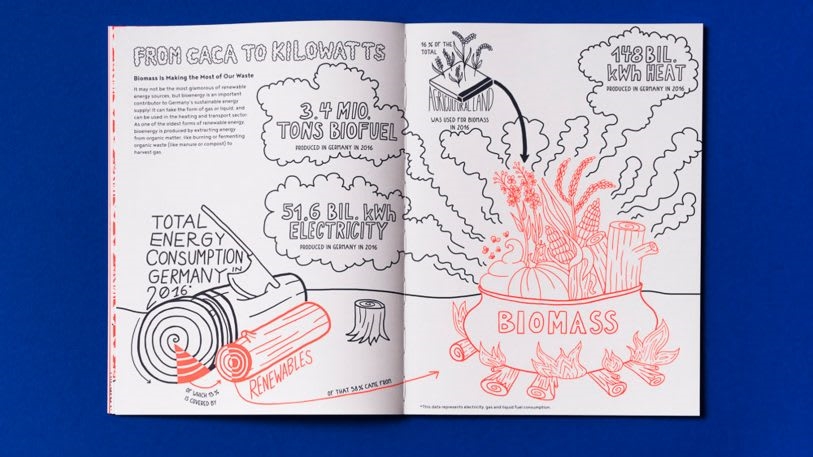
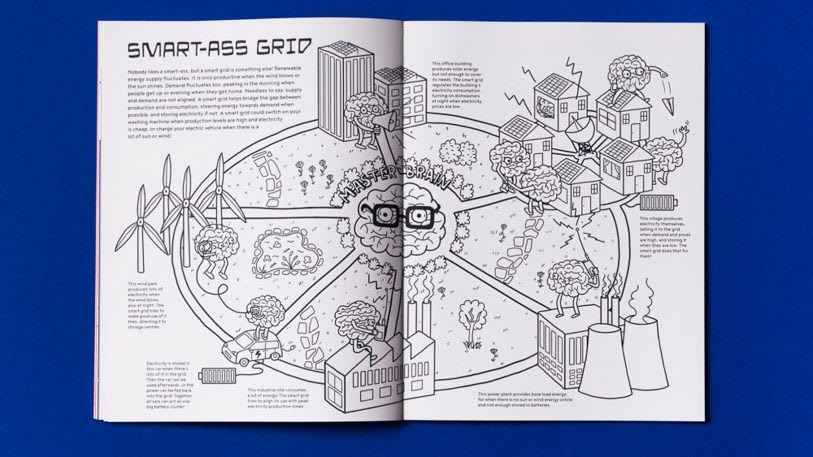
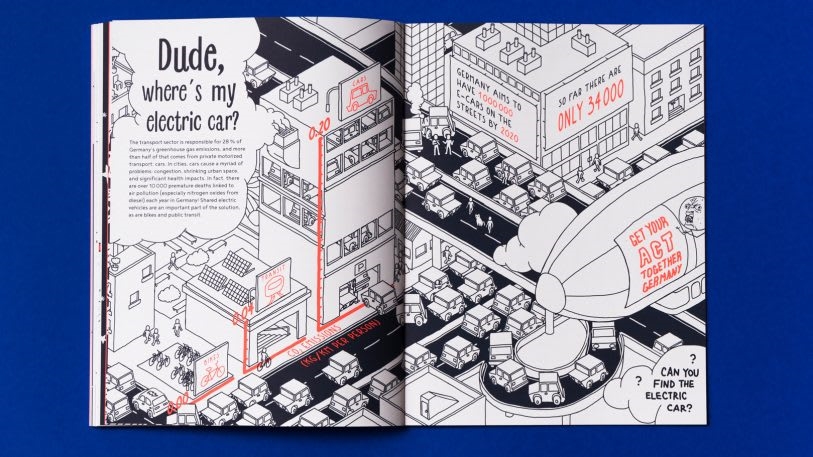
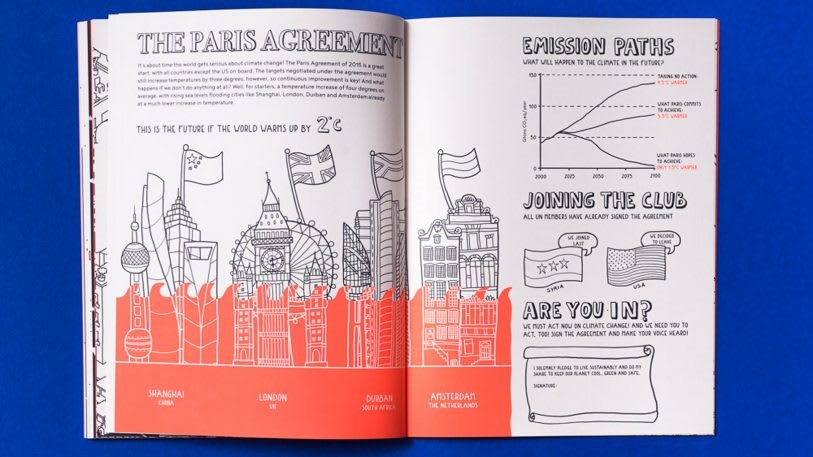
Fast Company , Read Full Story
(19)

